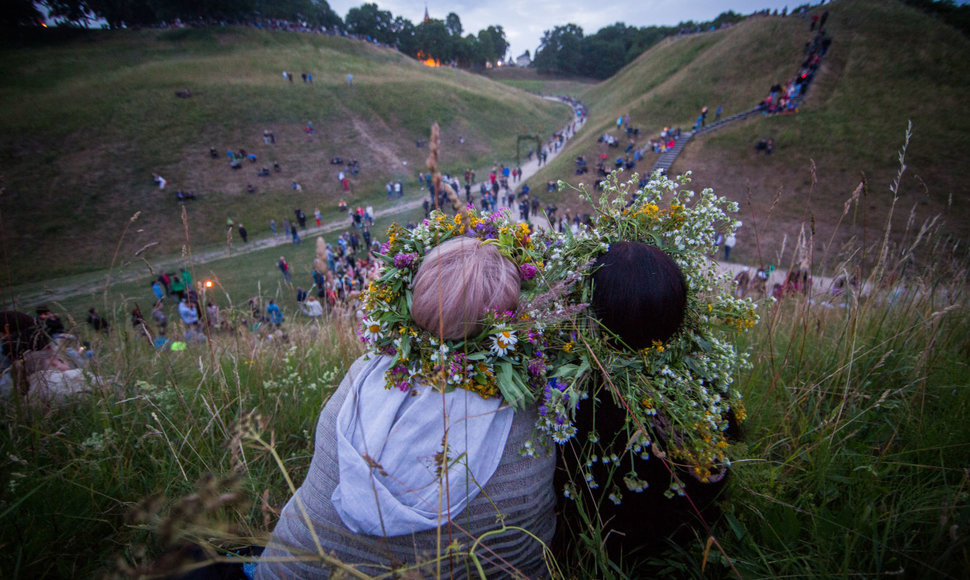However, with increasing numbers of visitors, the challenge of maintaining the hillfort territories in good condition emerges, and it is important for holidaymakers to take care of not only the trash they generate themselves, but also that of others.
Many Lithuanians are familiar with the Kernavė hillforts which have been included in the UNESCO protected objects list, or the Palanga hillfort right next to the Baltic Sea, which is also known as the Hill of Birutė. Also, many a traveller has visited Varniai regional park’s Šatrija hillfort, which features a view of the Medvėgalis and Sprūdė hillforts, while the Merkinė hillfort and the intersection of the rivers Nemunas and Merkyshave become the long-standing symbol of the Dzūkija National Park.
Responsible leisure in nature
Hillforts can be found across all of Lithuania’s regions, and often these natural objects become a spontaneous stop for passers-by. For some holidaymakers, visiting a hillfort is an enjoyable means of spending time, which helps them get to know their country better.
State Service for Protected Areas public relations specialist Diana Rakauskaitė says “Hillforts are a unique facet of natural and cultural heritage, thus visiting hillforts should be indelible from environmental conservation thinking. Our main principle is what you bring into nature, you take away with you. Everyone, should take care of their trash as they walk down educational trails, or go to observation points on hillforts.”
“Of course, communal responsibility is also very important. This spring, we called people to join the initiative Kiekvienas Iš Gamtos – Po Šiukšlę [A Piece of Garbage out of Nature by Everyone] and while visiting nature on their own or with their families, to carry at least a small trash bag so that our natural spaces would be cleaner,” she continued.
According to Rakauskaitė, the amount of garbage found in nature is on the decline, however another trend is gaining strength: during lockdown, national and regional parks have seen an increase in construction material refuse and used tyres.
“Most likely, due to the lockdown restrictions, it was simpler for people to take the garbage to the forest, rather than a waste collection point. Thus, we see accumulations of refuse in the most beautiful natural locations. With the weather warming, numerous people have begun visiting national and regional parks, hillforts and other natural sites and it is crucial to discuss being responsible while spending time in nature,” D. Rakauskaitė notes.
Everyone’s contribution is important
Today, 42per cent of Lithuanian residents sort their waste, contributing to environmental conservation and reducing pollution in Lithuania. Every individual in Lithuania could sort around 60.5 kilos of packaging every year, however according to current data from Žaliasis Taškas, this number is currently at only 10 kilos.
“What is important is that the waste we sort becomes raw materials that are re-used and if they are unsuitable for reuse, they are instead used to generate energy. In either case, the sorted waste no longer ends up in a landfill, thus by sorting we prevent the increase in landfill sizes and at the same time, reduce environmental pollution. The contributions made by each and every one of us are crucial.” Žaliasis Taškas director-general Kęstutis Pocius says.
Currently, there are 89 landfills in Lithuania. Eleven of them are newly established, while the rest no longer see further waste depositing. The new landfills are established based on high environmental protection requirements, and their negative impact on the environment is smaller. However, the old landfills have especially high pollution levels.
“With the waste in landfills decaying, harmful materials and gasses are excreted and they have a negative impact on people’s health and contribute to the greenhouse effect. Also, large swathes of land and underground water are polluted by waste. Thus, it is important to sort garbage and reduce the number of landfills in Lithuania. By gathering not only our own garbage, but also that left by others, we can contribute to creating a cleaner environment,” K. Pocius notes.
The advert for Žaliasis Taškas’ campaign “Lithuania – a Land of Hillforts” can be found here.












